Sierra
Madre Oriental, México
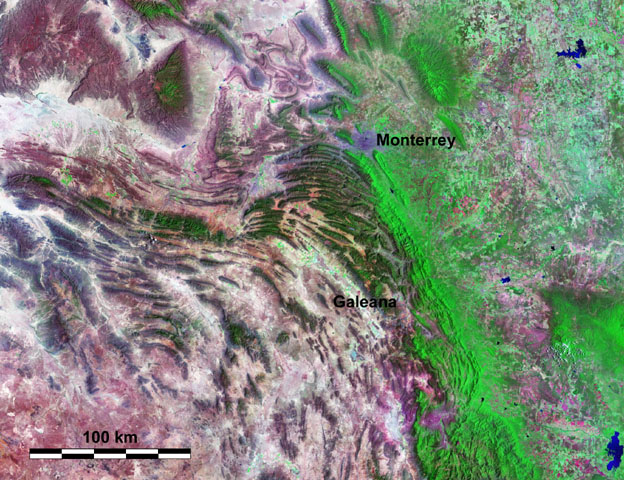
This Landsat
5 image illustrates the curved axial traces of folds in
the Monterrey salient, which marks the apex of the more regional
SMO salient, only a portion of which is pictured here. Physical
modeling
of salient development over discontinuous weak decollement is the
thesis topic of Masters candidate Christine Fox. The fold-dominated,
thin-skinned deformation developed during Paleogene orogeny,
contemporaneous with Laramide basement uplifts in Wyoming.
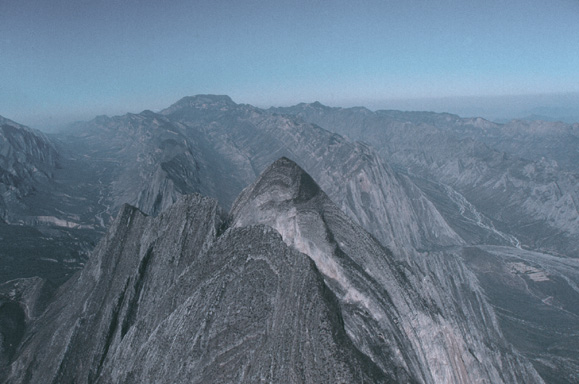
Oblique
aerial photograph of an unfaulted, isoclinal anticline in
Mesozoic carbonate strata of the Monterrey salient. The narrow
hinge zone of the fold is exposed in the near ground peaks.
However,
the crest of the anticline is eroded away at the level of erosionally
resistant Lower Cretaceous carbonates beyond the dog-tooth peak,
where the characteristic pair of mountain ranges mark the anticline.
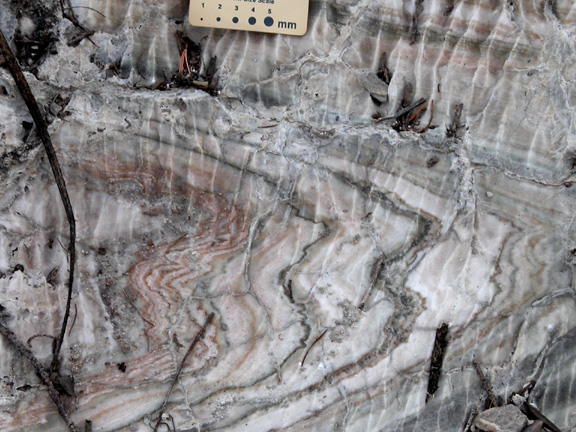
The
folds of the SMO salient are detached in Upper Jurassic
gypsum-anhydrite (halite has never been found in the fold
belt,
although it crops out farther north), which is locally exposed
in
the cores of anticlines. Extensive outcrops of the
decollement
layer and siliciclastic strata below occur near Galeana,
where
the picture above was taken, and show that underlying rocks
were uninvolved in folding.
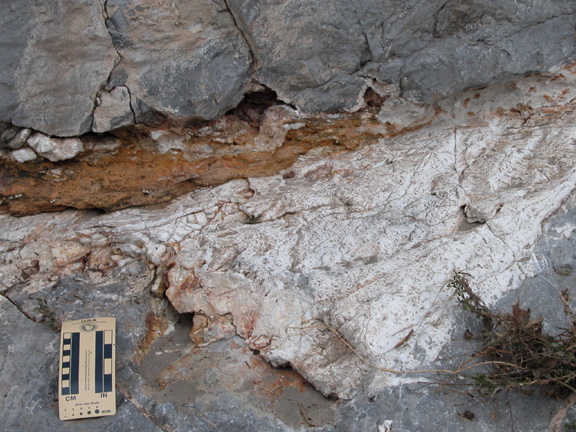
The
dominant deformation mechanism during folding of the
Cretaceous carbonate section was flexural slip. The sheet
of
white fibrous calcite and reddish breccia in this photo mark
the
contact between two carbonate layers in Cañón Cortinas.
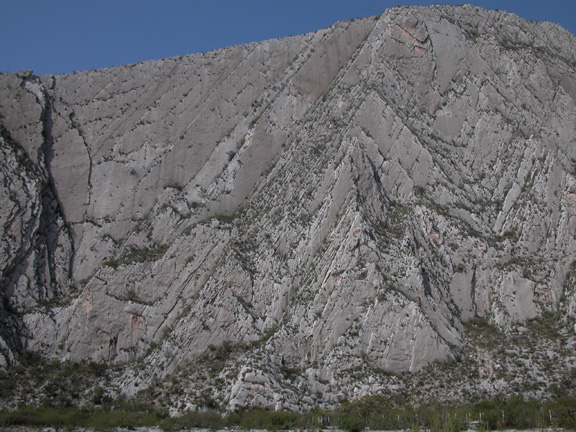
It
would be easy to rationalize the fracture pattern in the
Cretaceous
carbonate flatirons at Cañón Huasteca as being
fold-related.
However, recent observations suggest that most fractures
formed
long before folding, during early burial diagenesis of the strata
and
in some cases near the paleo-sea floor.
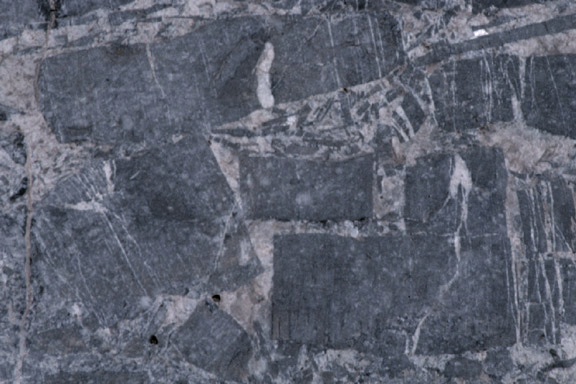
Cross-cutting
relations show that the dolomite- and calcite-filled veins
in these breccia blocks at Cañón de las Palmas were already
present
at the time of brecciation. Overlying growth strata (near
the 120 Ma
sequence boundary) that in-filled karst pits demonstrate that
solution
collapse occurred during deposition, so the fractures also must
have
been syn-depostional and formed long before Paleogene folding.
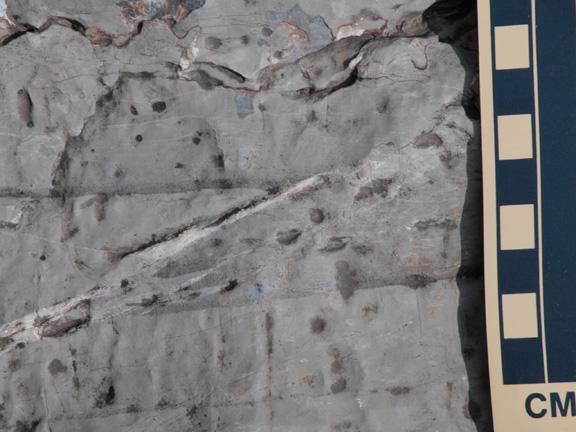
Many
minor faults in the Monterrey salient also developed during
deposition of the Cretaceous carbonates. For example, the
middle
of three thrust faults that imbricate mm-scale laminations at
this
outcrop in Cañón Huasteca is cross cut by a burrow!






